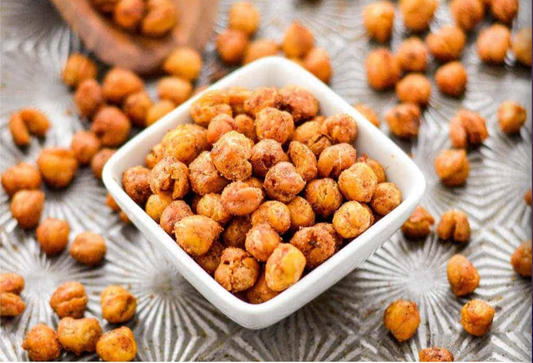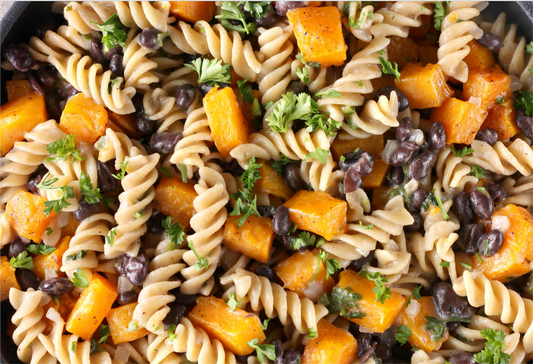Scroll through social media for 5 minutes and you’ll see the image that the fitness industry is selling - six-pack abs, thigh gaps, tight butts, “flawless health”. And our gut reaction to those images may be jealousy or even personal self-loathing because we, too, wish we looked that way. But have you ever wondered what it takes and it COSTS to achieve that look? Do you know exactly what you need to give up (and do more of) to get there?
Now, there are always trade-offs and adjustments that need to be made if you’re looking to lose fat and improve your health. But we’re talking about the lean bikini models up on stage. Let’s talk about what these trade offs are so you can consider how to get the body and health that you want while living the lifestyle that makes you, you.
A tale of two clients
Not long ago, one of our successful clients came to us with a question.
She had already lost 30 lbs, was enjoying her weekends with friends, hiking, working out, wearing clothes that used to frustrate her because they were tucked away in her closet. Her progress was incredible.
But what next?
Now don’t get me wrong, this client was also thrilled with her progress. But she felt like the bar was raised higher.
She also wanted to see her abs and to have more definition in her arms.
Not a wild, bikini model-type leanness, but definitely a leanness that gave her more muscle definition.
She figured that if she just kept going that she would get there within a couple of months and her dream body would be achieved.
Meanwhile, another client, had a very different concern.
She just wanted to lose a little weight but really focus on her health and well being. She felt super low energy and was sick of feeling sluggish and unmotivated.
But she worried that in order to do so, she’d have to give up everything, become a “health nut”, and make massive changes.
Changes that probably included 6 AM bootcamps, kale shakes, lemon juice cleanses, and 1000 situps a day… forever.
Two common misperceptions
Our two client stories reflect two common misperceptions:
Myth #1: With just a few small, easy, steps and changes to one’s diet and exercise routine, you too can have shredded abs, big biceps, and tight glutes, just like a magazine cover model.
Myth #2:“Getting healthy” or “losing weight” involves massive, painful, intolerable sacrifice, restriction, and deprivation.
Of course, neither of these are true.
Reality #1:The process that helps you lose “the first 10 pounds” isn’t the same one that’ll help you lose “the last 10 pounds”. Indeed, it usually takes a lot more work as you get leaner.
Reality #2:If you do aspire to “fitness model” or “elite athlete” lean, you might be surprised. Images are photoshopped for effect. Bodybuilders only look like that for competition. And achieving that look comes at a high cost; one most people aren’t willing to pay.
Reality #3:However, if you’re okay not being on the next magazine cover and aspire to be “lean and healthy” even small adjustments can — over time — add up to noticeable improvements. Sometimes these improvements can change, perhaps even save, lives.
This is exactly why I created an Instagram post outlining exactly what it takes for people to lose fat and get down to a certain body fat percentage. What most important to us is that you understand what’s required so you can make informed decisions about your body and your health.
Your body, your health, your choice
At some point, many of our coaching clients decide that being severely out of shape costs them too much energy, health, quality of life, and longevity. So they choose to change their behaviours and choices. With our help.
Other coaching clients decide that they want six-pack abs. Then, they discover that this option costs them something too. Some folks are willing to pay that cost. But most aren’t.
At the end of the day, it’s your choice, but here’s something to remember.
1. If you want to make further changes to your body, you’ll need to make further changes to your behaviours.
2. The leaner you want to get, the more of your behaviours you’ll have to change.
What you decide to change, and how much you decide to change it, is up to you. What’s most important here is that you understand what it actually takes to do what you want (or think you want).
What’s a healthy level of body fat, anyway?
First, for the sake of context, let’s take a look at some numbers.
Data tell us that most women can be healthy between 22-33%.
Right now in the U.S., the average woman is about 40% fat.
In other words, the average adult in the U.S. (and in Canada as well) is carrying a lot of excess body fat. Unhealthy levels of body fat.
Getting the process started
The good news is that it’s not that hard to go from an unhealthy level of body fat to the higher end of “normal”.
You can do it with a few relatively small, easy-to-implement changes.
For instance:
- drinking less soda or alcohol each day
- not overeating desserts and fast foods (instead, just eating them in reasonable amounts)
- taking a daily walk or adding a yoga class
Assuming there are no other factors involved (such as a chronic health problem), if you make a few small changes like these, and do them consistently, in six months to a year, your body fat percentage will drop and fall into a much healthier range.
Now of course, not every change will feel simple, small, or easy. Especially when you start out.
You’ll need to put a little extra effort and energy into making those changes happen every day. And having a trainer or a coach support you –and hold you accountable– will probably help you feel more confident and on-track.
Nevertheless, if the changes are small enough, and you practice them consistently, you’ll probably find that eventually they’re just part of your regular routine.
In fact, one day in the future, you might even say, “I just don’t feel like myself without my daily walk!”
“Overweight” to “no-longer-overweight” to “lean”
Suppose you’ve made a few changes like this and you’re feeling good! You feel physically better and maybe fitting into old jeans.
Maybe you’re in that zone of “I feel so much better, but I still have some extra padding I’d like to get rid of.”
What’s the next step?
Well, if you want to go from roughly 28% to 24%, you’ll need to make some bigger changes.
You’ll need to invest more time, energy, and effort. You’ll need to plan more.
And you’ll also have to make some trade-offs.
You’ll probably need to do more stuff, such as:
- getting more exercise and daily-life movement, and making that exercise more intense
- eating more vegetables and lean protein
- choosing more whole foods
- doing more meal planning
- getting serious about rest and recovery
- learning your physical hunger and fullness cues.
You’ll probably need to do less stuff, such as:
- drinking less alcohol and other high-calorie beverages
- eating fewer processed foods
- not eating when you’re not physically hungry.
And you’ll need to make these small changes consistently, over a period of time.
Many folks will decide that these changes are worth making. They want to look and feel better, get a good night’s sleep, get off medications, and so forth. So they’re ready to compromise.
Other folks will decide that they’re not yet ready to make more adjustments. And that’s fine too.
The most important thing is that you realize: In order to change… you have to change.
What it takes to get “super-lean”
At the next stage — going from athletically lean to bodybuilder lean — the tradeoffs get even more serious.
Here’s something that you may not realize:
Elite bodybuilders getting ready for a contest and models getting ready for a shoot are basically in a slow starvation process.
Adhering to an extremely strict and precise regimen of eating and training (and perhaps adding some drugs into the mix) is the only way way they can drop their body fat to extremely low levels.
Females can get to under 16%.
But this process is not for the faint of heart.
It goes against biological cues. It requires exercising when exhausted. It demands ignoring their desire for food in the face of powerful hunger cues. It involves intense focus and dedication.
And it often distracts from other areas of life that these athletes might enjoy and value.
Imagine all the practical things that are involved in very strict dieting and training.
- That food is generally very plain — lean protein, steamed vegetables, plain potatoes or rice, etc.
- You have to carry that food with you so you can eat at a precise time.
- You cannot eat in restaurants.
- You have to do a specific workout on a given day, exactly as specified.
- No sick days, no slacking.
- You’ll probably be training 2 or 3 times per day.
- You have to sleep and recover precisely.
- No parties or staying up late.
- You can’t think straight because you’re always hungry and tired.
- Your whole life revolves around making food, dieting, training, and recovery protocols.
- Did we mention you’re slowly starving?
So forget having a sex life, social life, parenthood, school, and probably a regular job.
Is that level of leanness worth it?
Having a six-pack doesn’t automatically make you healthy. In fact, getting too lean can be actively unhealthy.
Many folks even rely on cosmetic surgery. Which creates its own health risks… and certainly doesn’t add health on its own.
In short, being really lean has almost nothing to do with being really healthy.
Indeed, being too focused on getting lean may lead you away from good health.
Getting clear, getting real
Clarity is essential in change.
If you think you may want to change how much body fat you have, start by getting a clear idea of where you’re at.
- Figure out your goals and priorities. If you don’t know what your priorities are, now’s a great time to explore that.
- Decide what you’re willing to do right now in order to serve those goals and priorities. Why?
- Decide how often, how consistently, and how intensely/precisely, you’re willing to do those things.
- Decide what you’re not willing to do right now. Why not?
- In the above steps, be brutally honest and realistic yet compassionate with yourself.
Now you have your action plan.
And you know where you are on the cost-benefit continuum.
In the infographic you saw earlier in this article, we provided rough estimates for what it might take to achieve specific levels of leanness or muscularity — or even simple health improvements, like getting off medications.
This is just a general guide. It’s a start. Something to get you thinking.
You may need more tailored guidance or coaching. Age, gender, genetics, medical conditions, and pharmaceuticals can all affect what you’ll need to do to get and stay lean.




